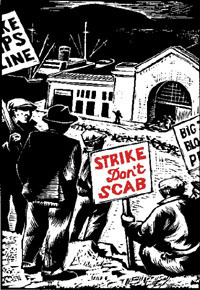|
|
|
|
|
|
SF cable car operators call for safety reforms in wake of devastating injuries "Most operators who spoke with the Examiner feared reprisal for voicing
SF cable car operators call for safety reforms in wake of devastating injuries "Most operators who spoke with the Examiner feared reprisal for voicing their frustration with safety."
http://www.sfexaminer.com/sf-cable-car-operators-call-for-safety-reforms...
A cable car conductor walks in the street as the Powell and Market cable car makes it's way to the Market Street turnaround Friday, July 10, 2015. San Francisco cable car operators feel their safety is more compromised now than ever, and part of the reason is traffic congestion. (Mike Koozmin/S.F. Examiner)
By Joe Fitzgerald Rodriguez on July 13, 2015 10:00 pm
The day he found out he would become a cable car operator in 2003, Muni employee Santiago Montoya was thrilled. He called the drivers of these iconic vehicles “ambassadors to The City,” as cable cars are one of the top tourist attractions in San Francisco.
“It was his happiest day,” said his wife, Zonia Montoya.
Perhaps his worst day, however, was April 6 of this year. That’s when he was hit by a car while on the job. The collision destroyed his body, and he is still recovering in a Concord hospital.
Two months later, another cable car operator, Reynaldo Morante, was struck by a suspected drunken motorcyclist. Morante’s injuries were severe and he slipped into a coma. This week, he is expected to be taken off life support.
Spurred by Morante’s impending death and Montoya’s injuries, cable car operators are asking the San Francisco Municipal Transportation Agency for new safety measures for those who operate The City’s moving monuments.
In response to several San Francisco Examiner inquiries and Morante’s collision, the SFMTA said it is evaluating all signage within cable cars and along routes to assess any needed changes to increase safety.
“The SFMTA offers its deepest thoughts and condolences to the family and friends of Reynaldo Morante,” said agency chief Ed Reiskin. “Like his fellow conductors and gripmen, Reynaldo routinely ventured into mixed traffic conditions ensuring that the streets were safe for his passengers.”
Incidents like these, Reiskin said, bolster the SFMTA’s resolve to “improve safety for the general public and for our own employees.”
The agency is also developing what officials call a “cable car collision reduction program” and launching a campaign to make drivers more aware of passengers and operators as they exit the vehicles.
Cable cars were created in an era in which the only roadside worry was the occasional unruly horse. Fast forward nearly a century and a half, and cable cars operate on some of The City’s most trafficked and dangerous streets, safety studies show.
Most operators who spoke with the Examiner feared reprisal for voicing their frustration with safety. But retired Muni operator Irwin Lum, who was also a Transport Workers Union Local 250-A president, said the streets are busier than ever before.
“There’s more traffic and congestion out there as a whole, with Uber, Lyft and [commuter shuttles],” said Lum. “That congestion leads to more drivers being frustrated and violating traffic laws. The SFMTA and The City should do more with an educational campaign to motorists on the dangers of going around any Muni vehicle.”
At an April safety meeting of the SFMTA’s cable car division, operators asked for more police enforcement of existing traffic rules, such as California Vehicle Code section 21756. That provision prohibits vehicles from passing up streetcars while they load and unload passengers.
Operators, however, were not satisfied with the Police Department’s response.
“SFPD offered the following suggestions and reminders,” the meeting minutes read, for the SFMTA to “reach out to the rental car companies and hotels to let them know about driving in SF” and to “conduct a [public service announcement] campaign.”
Improving safety for cable car operators may be an uphill climb in other ways as well.
The day he was hit, Santiago Montoya was helping elderly passengers exit his cable car at Powell and Jackson streets near Chinatown. He noticed a vehicle speeding toward him. He tried to signal to the vehicle to stop, but “instead of slowing down they sped up,” Santiago Montoya said.
He was caught under the vehicle and dragged at least 30 feet.
Among Santiago Montoya’s 20 broken bones were his right leg, ribs, pelvis and left arm. He spent a month in intensive care, said Zonia Montoya. “It was horrifying,” she said.
After Santiago Montoya’s collision, the SFMTA handed out crossing-guard-style handheld stop signs and required operators and gripmen to wear yellow safety vests at all times.
In recent months, the transit agency has painted “red carpet” Muni and taxi-only lanes along Powell Street north toward Nob Hill. But after the hill crests at California Street, the red lane ends. Montoya was hit on a portion of Powell Street without red lanes.
-

- Log in to post comments
- Printer-friendly version



